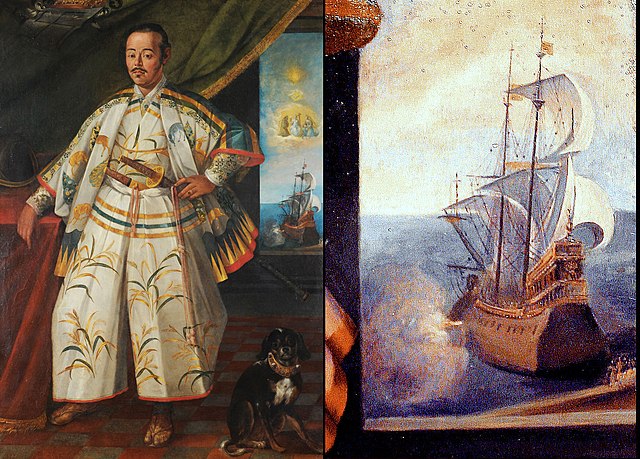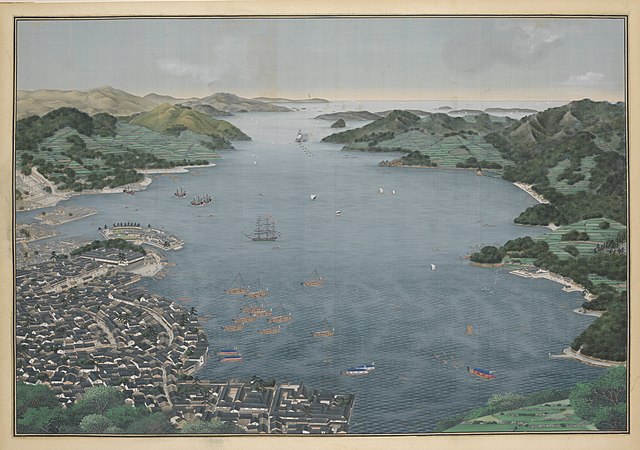The han school was a type of educational institution in the Edo period of Japan. They taught samurai etiquette, the classical Confucian books, calligraphy, rhetoric, fighting with swords and other weapons; some also added subjects such as medicine, mathematics and Western sciences. Schools in different han (domains) provided different curricula and had varied conditions for entry. Over the course of the Edo period, han schools evolved from simple one-room schools to large educational facilities with multiple buildings. The total numbers of han schools varied from several dozen in the early 17th century to over 250 by the end of the 19th century.
Shintokukan is a han school in Nagano Prefecture that opened in 1860
A room in the Kōdōkan
Training grounds of the Matsushiro Literary and Military School
Nisshinkan
The Edo period , also known as the Tokugawa period , is the period between 1603 and 1868 in the history of Japan, when Japan was under the rule of the Tokugawa shogunate and the country's 300 regional daimyo. Emerging from the chaos of the Sengoku period, the Edo period was characterized by economic growth, strict social order, isolationist foreign policies, a stable population, overall peace, and popular enjoyment of arts and culture, colloquially referred to as Ōedo .
Tokugawa Ieyasu, first shōgun of the Tokugawa shogunate
The San Juan Bautista is represented in Claude Deruet's painting of Hasekura Tsunenaga in Rome in 1617, as a galleon with Hasekura's flag (red manji on orange background) on the top mast.
A bird's-eye view of Nagasaki Bay, with the Dejima foreign trading post island at mid-left (1833)
Itinerary and dates of the travels of Hasekura Tsunenaga. Prior to Panama Canal, caravans carried goods across Central America.








